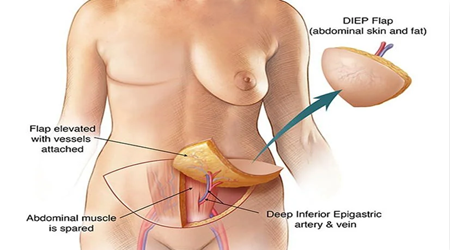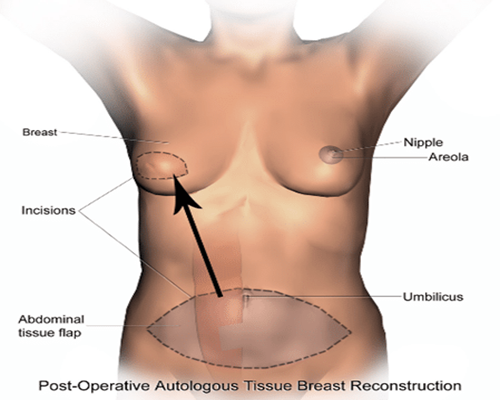Modern Flap Reconstruction in Mumbai
Modern Flap Reconstruction: What Every Patient Should Know

Flap reconstruction is a surgical method that uses tissue from one part of the body to repair or replace damaged tissue elsewhere. It plays a crucial role in restoring function and appearance after injury, surgery, or disease. Understanding the basics, causes, treatment options, and expert advice can help patients make informed decisions and prepare well for their journey.
This blog will explain what flap reconstruction is, common reasons why it is needed, the different techniques available, and how to optimize recovery and results. You will also learn about the expertise of Dr. Vinay Jacob, a senior plastic and reconstructive surgeon, who brings over 25 years of experience to this field.
Basics of Flap Reconstruction

What is Flap Reconstruction?
Flap reconstruction involves moving a section of tissue—skin, fat, muscle, sometimes bone—with its blood supply intact, from one area of the body (the donor site) to another (the recipient site). Unlike skin grafts, which transfer only the skin surface, flaps include deeper tissues and blood vessels, allowing for better healing and integration.
- Local Flaps: Tissue moved from an area adjacent to the defect.
- Regional Flaps: Tissue transferred from a nearby region but not immediately next to the defect.
- Free Flaps: Tissue completely detached and reconnected microsurgically at the new site, including blood vessels.
Why Use Flaps?
Flaps are preferred when defects are large, complex, or require volume and support. They help restore both form and function, especially when vital structures like muscles or nerves are involved.
Causes and Common Concerns
- After trauma such as burns, accidents, or deep wounds.
- Post-cancer surgery when tissues are removed, such as breast or head and neck cancers.
- Congenital defects or deformities.
- Chronic wounds or infections that do not heal with simple treatments.
- Limb salvage when amputation is avoidable through reconstruction.
Patient Concerns:
- Will the flap survive? Blood supply is key to flap survival.
- What about scarring and appearance? Skilled surgeons aim for the best cosmetic outcome.
- Is the donor site affected? Some discomfort and scarring occur but are minimized.
- How long is recovery? Varies depending on flap type and location but usually involves weeks to months.
- Are there risks of complications? Infection, partial flap loss, or delayed healing are possible but can be managed.
Treatment Options and Techniques

Choosing the Right Flap
Surgeons assess defect size, location, patient health, and functional needs to select an ideal flap. For example:
- Muscle flaps provide bulk and blood supply, useful for infected or irradiated areas.
- Fasciocutaneous flaps combine skin and fascia, good for covering surfaces.
- Perforator flaps spare muscle, reducing donor site morbidity.
Microsurgery Advances
Free flap surgery relies on reconnecting tiny blood vessels under a microscope. This allows movement of tissue from distant sites like the thigh, back, or abdomen. Microsurgery has expanded possibilities in complex reconstruction.
Adjunct Therapies
Wound care, physiotherapy, and sometimes hyperbaric oxygen therapy improve outcomes. Nutrition and smoking cessation are critical for healing.
Additional Insights and Expert Recommendations
Preparation and Expectations
Before surgery, patients undergo thorough evaluation including imaging and lab tests. Discuss goals, risks, and postoperative care with your surgeon. Realistic expectations help with mental and physical preparation.
Postoperative Care
Close monitoring of the flap ensures early detection of issues. Follow instructions on wound care, mobility, and medications strictly.
Recovery and Rehabilitation
Healing times vary but expect gradual return of function over weeks. Physical therapy may be necessary to regain strength and flexibility.
Long-Term Results
Successful flap reconstruction can restore appearance, reduce disability, and improve quality of life. Follow-ups help address any secondary procedures or complications.
Meet Dr. Vinay Jacob
Dr. Vinay Jacob is a Senior Plastic and Reconstructive Surgeon with over 25 years of experience. He completed his MBBS from St. John's Medical College, Bangalore, MS from Tata Memorial Hospital, Mumbai, and advanced degrees in Plastic Surgery. Graduating with distinction, he is known for expertise in complex reconstruction.
His specialties include:
- Gender-Affirming Surgeries
- Hand & Facial Rejuvenation
- Nasal & Respiratory Procedures
- Limb Salvage & Prosthetics Integration
- Body Contouring & Fat Reduction
- Intimate & Pelvic Procedures
- Abdominal & Hernia Repair
- Neurological & Pain Relief Surgeries
- Breast Reconstructive Surgery
You can consult Dr. Vinay Jacob at:
Reconstructive Surgery Centre
503, Sagar Fortune Building,
Above A Kreations, Waterfield Road,
Bandra (West), Mumbai - 400050
FAQs
1. What determines if I am a candidate for flap reconstruction? Your surgeon evaluates the wound, overall health, and goals to decide suitability. Complex defects often benefit most.
2. Is flap reconstruction painful? Postoperative pain is managed with medication. Some discomfort at donor and recipient sites is normal but temporary.
3. How long does the surgery take? Duration varies from a few hours to over 10 hours for complex microsurgical flaps.
4. Are scars permanent? Yes, but surgeons place incisions carefully to minimize visible scarring.
5. Can I resume normal activities after recovery? Yes, with gradual rehabilitation, many patients regain full or near-full function.
6. What risks are involved? Complications include infection, flap failure, blood clots, or delayed healing. Careful monitoring reduces risks.
7. Will insurance cover flap reconstruction? Coverage depends on your policy and medical necessity. Check with your provider beforehand.
8. How do I care for the flap at home? Follow your surgeon's instructions on wound hygiene, activity restrictions, and signs of complications.
Conclusion
Flap reconstruction is a key tool in restoring both function and appearance after significant tissue loss. Learning about the procedure, what to expect, and the expertise available can empower you to make informed decisions. Consult with experienced surgeons like Dr. Vinay Jacob who can guide you through the process safely and effectively. Taking this step can open the path to recovery and improved quality of life.

